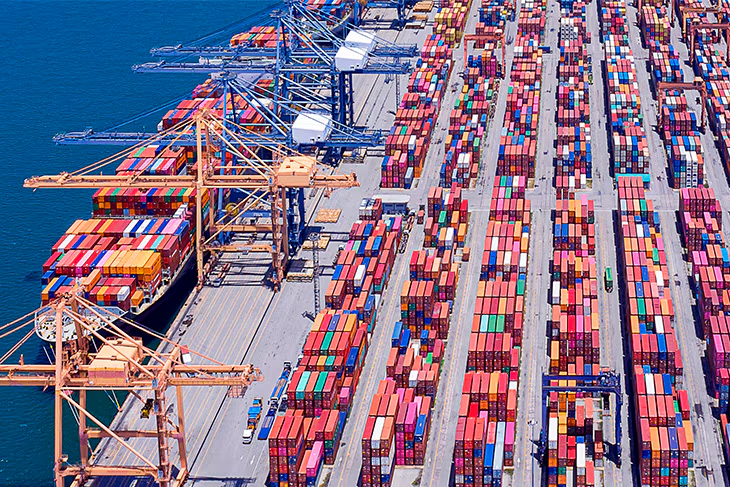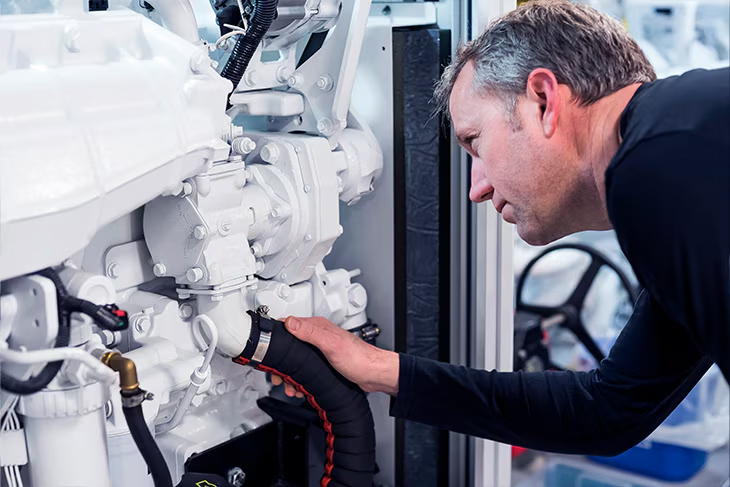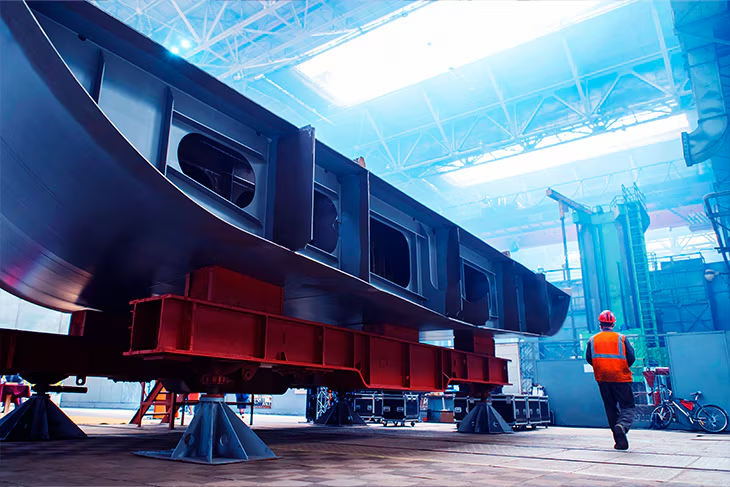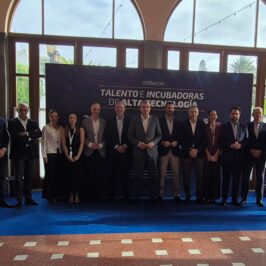Maritime transport needs alternatives sustainable. Fuels such as liquefied gases or methanol, new ship designs and technologies energy efficiency, such as carbon capture on board, are bets in progress. Electrification is reserved, for now, for pleasure boats.
The Odyssey tells that, once the Trojan War was over, it took Ulysses ten long years to return to his home in Ithaca. His trip was interrupted by all kinds of complications, led by kings, cyclops or sirens, but it was also lengthened for a very simple reason: the Greek depended on the winds blowing in the direction of his home.
Centuries after this adventure was written, science and technology made it possible to build devices to navigate in the middle of the oceans. The world was traveled by boat, still depending on the currents and winds propel the ships in the right direction.
Today, the situation is very different. It is estimated that 90% of the goods traded worldwide are transported by sea and that the volume of international maritime trade can double by 2050. Transport by sea is no longer a challenge, but the technology and fossil fuels that have made it possible pollute the oceans and accelerate the climate change.
One of the ways to mitigate this problem is, again, through innovation. In recent years, numerous solutions have been developed to advance the decarbonization of the maritime sector and create more efficient, clean and sustainable alternatives. Many are related to alternative fuels to fossils, but ship design or energy efficiency technologies also come into play.

The challenge of decarbonizing maritime transport
The International Maritime Organization (IMO) aims to reduce 20% of maritime transport emissions by 2030 and 70% by 2040, taking those of 2008 as a reference, as well as reaching net zero emissions by 2050. In this roadmap, regulations such as the FuelEU Maritimee of the European Union or the actions taken by countries with high maritime activity, such as the USA, China or Peru.
The moment is key. Reduce emissions greenhouse gases (GHG) of the maritime sector is essential to achieve the objectives set byr the Paris Agreement. That is, keep the rise in global temperatures as close as possible to 1.5 °C and below 2 °C (relative to the pre-industrial average).
But abandoning fossil fuels to reduce emissions carbon dioxide (CO2) is not easy in sea transport. “This is a sector that is difficult to decarbonize, because ships need a lot of power over a long journey,” explains Maurici Hervas, researcher in Energy Transition at the Port of Barcelona.
“Of course, there are different cases. We have boats that make short journeys, but also many other transcontinental ones, which travel very long distances without the possibility of recharging energy. These need fuels with a high energy density, such as fossils. It is difficult to find alternatives among what we currently have.”
However, he adds, this does not mean that work is not being done to advance a transition towards a system with less polluting fuels. In this process, innovation plays a key role to offer alternative energies, energy efficient technologies (which are gaining importance both on board and in ports) and more ergonomic and efficient designs for ships.
A key aspect for the decarbonization of the maritime sector: alternative fuels
Innovation that makes it possible to replace fossil fuels with less polluting ones is a priority to decarbonize sea transport. Electrification, which is a solution in many other sectors, is inefficient in the vast majority of cases (except for local journeys or pleasure boats). Hydrogen, on the other hand, has low energy density.
For this reason, efforts are currently directed towards so-called transition fuels, such as liquefied natural gas (LNG). “Its efficiency is proven and it makes economic sense,” explains Hervas. “LNG reduces greenhouse gas emissions by up to 20%, but we could talk about even higher figures if the gas were generated biogenically, with agricultural waste, for example. In addition, its combustion generates fewer polluting particles and the latest technical innovations also allow methane leaks to be reduced.”
Another option that is gaining strength and that may be relevant in the coming years is methanol, although, according to the Port of Barcelona researcher, there is concern that there may not be enough to satisfy all demand. “Progress is also being made to incorporate ammonia; “both have slightly higher energy densities and can be considered more sustainable fuels as long as their production is carried out with processes based on clean energy,” he explains.
The data from the 'Maritime Forecast to 2050' report, prepared by the classification society DNV, places fuels such as LNG, methanol and liquefied petroleum gas (LPG) at the center of the current energy transition. And, according to Hervas, the future lies in the combination of different options. “We are going from a system in which practically a single type of fuel was used, marine diesel, to another much more distributed one in which there will be methanol, natural gas or biofuels, for example,” he says.
Innovative technologies for the energy transition of the maritime sector
The Maritime Forecast to 2050 report points out the importance of innovative technologies to accompany alternative fuels in this transition. An example is onboard carbon capture systems (OCC technology, 'Onboard Carbon Capture'), which allow ships to capture part of the CO2 they emit during their voyages.

Another is air lubrication systems, which during navigation eject air to create bubbles that reduce the friction between the hull and the water. In this way, resistance is reduced and, with it, fuel consumption and greenhouse gas emissions.
There are also methods in which technological innovation plays a less relevant role, but which are very effective. “For example, cleaning biofouling. In recent years its effectiveness has been demonstrated and it is gaining more and more importance,” explains Hervas. “It consists of cleaning the hull of organisms or the remains of life particles that have adhered over time. "These reduce the ship's ability to move forward, so cleaning them has great potential to increase its energy efficiency."
“These innovations are very interesting, because shipping companies can adopt them relatively quickly. The fact that there is innovation does not usually fall on deaf ears. Furthermore, when combined with other factors, such as optimizing routes or reducing the transit speed of ships, innovative technologies can be very relevant to advance decarbonization,” says Hervas.
The electrification of pleasure boats

There is a sector in which decarbonization is already a possibility: that of recreational boats. The fact that they make shorter journeys and that their size is much smaller than that of vessels dedicated to the transport of passengers or goods makes their electrification possible.
The ‘Electric Leisure’ study & Sea-going Boats and Ships 2021-2040’ indicates that the market for electric yachts, sailboats and catamarans is strong. Every year, tens of thousands of units are sold. A benchmark in this market is the Maltese company ZEN Yachts, which markets a yacht that runs 100% on clean energy, is made of materials with a reduced carbon footprint and has a design that promotes energy savings.
“Our goal is to capture energy as much as possible and spend as little as possible,” explains Julien Mélot, general director of ZEN Yatchs. “Our boat is different from the others because it works like a power plant. It has 18,000 watts of solar power, enough to power the boat and to power all the electrical appliances,” he points out.
An important part of the innovation in this boat derives from its own design. Its weight has been significantly reduced, so it displaces less water, moves more easily and requires less energy to propel itself. “We innovate at all levels: in electrical production, in the construction of the boat, in the design of furniture, in the production of materials... We break the rules to innovate and be able to reduce, as far as possible, the impact environmental impact of recreational boats,” says Mélot.
It is expected that in the coming years the number of pleasure boats sailing along the coasts of the world will grow. But, for this to be the case, another element is necessary in which innovation is also key: charging points. Without a network of chargers located within a short distance from each other, it is impossible to navigate with electric boats (or, at least, move away from the starting point).
In this context, names like Aqua Super Power arise. This company is creating a global infrastructure of fast charging networks that can be used through an application from a smartphone. In Europe, it already has chargers in Spain, Portugal, Italy, France, the United Kingdom and Sweden and, in America, it has begun its expansion with devices on both coasts of the United States.
Recharging technologies thus join the rest of the numerous innovations that make it possible for sea transport to have a less polluting future.
Source: BBVA









